1
Aspal mór na hÉireann (Great apostle of Ireland)
Legend has it that Maewyn Succat was born into a wealthy Romano-British family around the year 386. Exactly where is unknown – some say Scotland, others Wales. He was taken to Ireland with his sisters, believed to have been named Darerca and Lupida, after being kidnapped at the age of 16 by Irish raiders. Enslaved, Maewyn tended sheep on Sliabh Mis (or Slemish Mountain), in Co Antrim, for several years before escaping to Britain.
He subsequently trained for the priesthood in France and changed his name to Patricius – he came to be known as Pádraig in Ireland and was also sometimes referred to by his family name, Mac Calprainn (or Son of Calpurnius).
Around 431, Pádraig returned to Ireland as a missionary; he would go on to play a significant role in converting Ireland to Christianity.
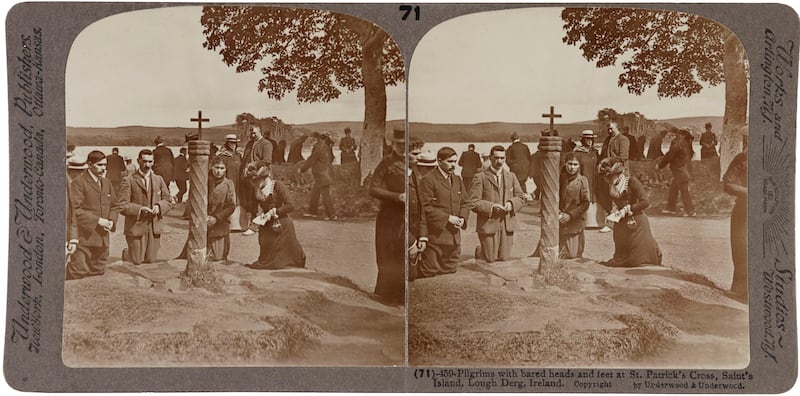
Two of his writings survived the ravages of time: the Confessio, a spiritual autobiography (”My name is Patrick. I am a sinner, a simple country person, and the least of all believers. I am looked down upon by many. My father was Calpurnius. He was a deacon; his father was Potitus, a priest, who lived at Bannavem Taburniae. His home was near there, and that is where I was taken prisoner. I was about 16 at the time”), and his Epistola ad Milites Corotici (Letter to the Soldiers of Coroticus), which is an exhortation for the return of Irish Christians kidnapped by Coroticus, a British chieftain.
RM Block
The dates of his life may be uncertain, but the purported date of his death, March 17th, is celebrated as St Patrick’s Day in Ireland and around the world. St Patrick is said to be buried in the grounds of Down Cathedral, in Downpatrick.
2
Niall na Naoi nGiall (aka Niall Mór or Niall Noígiallach)
Believed by some to be the raider responsible for bringing Patrick to Ireland, Niall na Naoi nGiall (Niall of the Nine Hostages) was an Irish king who ruled during the fourth or fifth century. But he was no ordinary raider. Niall was the son of Eochaid Mugmedón Mac Muireadach, a high king of Ireland, and descendant of Cormac Ulfhada (aka Cormac Mac Airt, one of Ireland’s most renowned high kings, who ruled from Tara for 40 years) and Conn Cétchathach (the legendary Conn of the Hundred Battles).
Known for his military prowess and his expeditions against the Roman Empire in Britain, on the coastline of Gaul, and beyond, Niall reigned for about 27 years.
He is said to have met his end after marching into France with his army of Irish, Scots, Picts and Britons to expel the Romans. While encamped by the River Leor (now called the Liane) he was assassinated by Eochaid, son of Énna Cinsalach, king of Leinster, out of revenge after being wronged by him.
3
Seamróg (Shamrock)
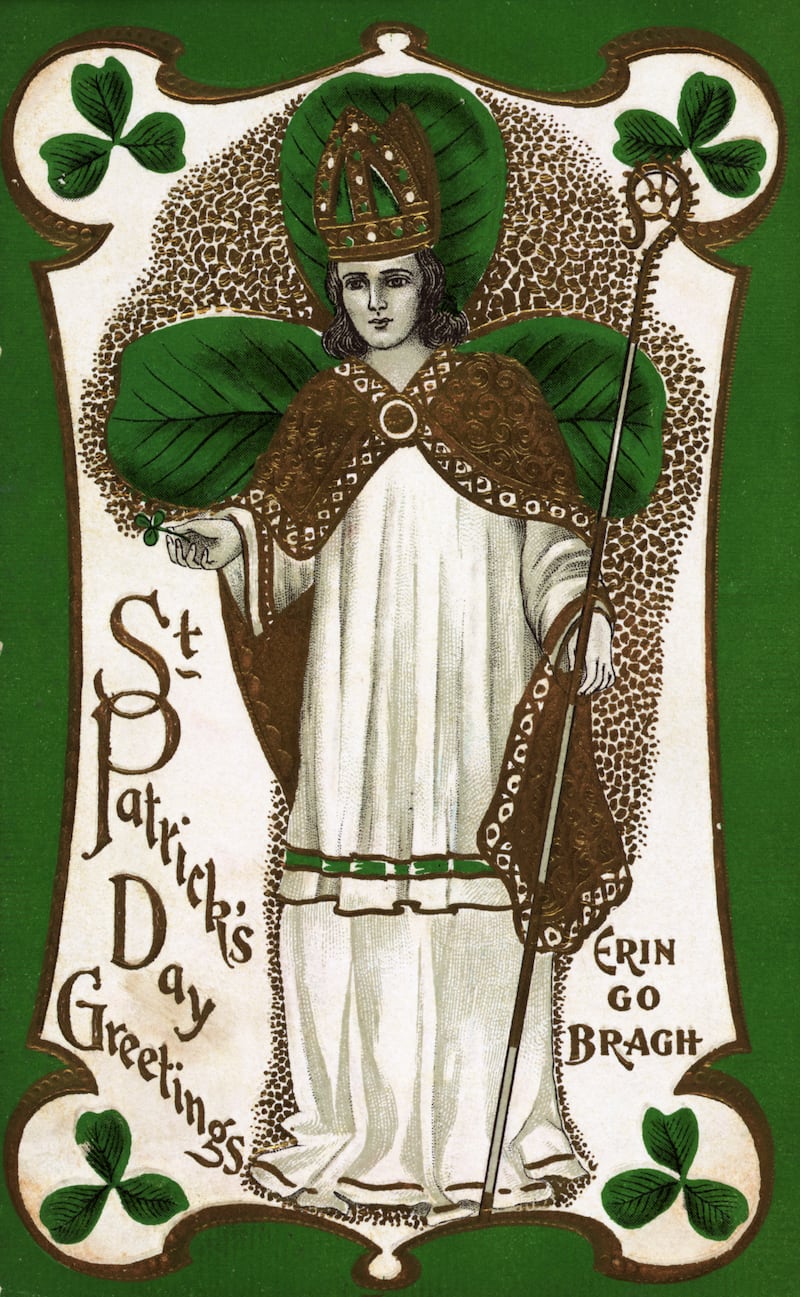
St Patrick is credited with introducing the shamrock as a symbol of the Holy Trinity; it has since become a symbol of Irish identity. The number three is significant in Irish oral literature, with magical or mystical qualities representing a sense of wholeness or completeness. Irish mythology is replete with examples where deities are represented in three forms, such as the ancient goddesses of Ireland Ériu, Banba and Fódla. Heroes and characters in the ancient sagas often have three particular qualities, and their worthiness and abilities are measured by having to perform three tasks to overcome a challenge (or three).
[ Tricolours fly high at London’s St Patrick’s paradeOpens in new window ]
4
‘Oisín, is fada do shuan’ (‘Oisín, your slumber is long’)
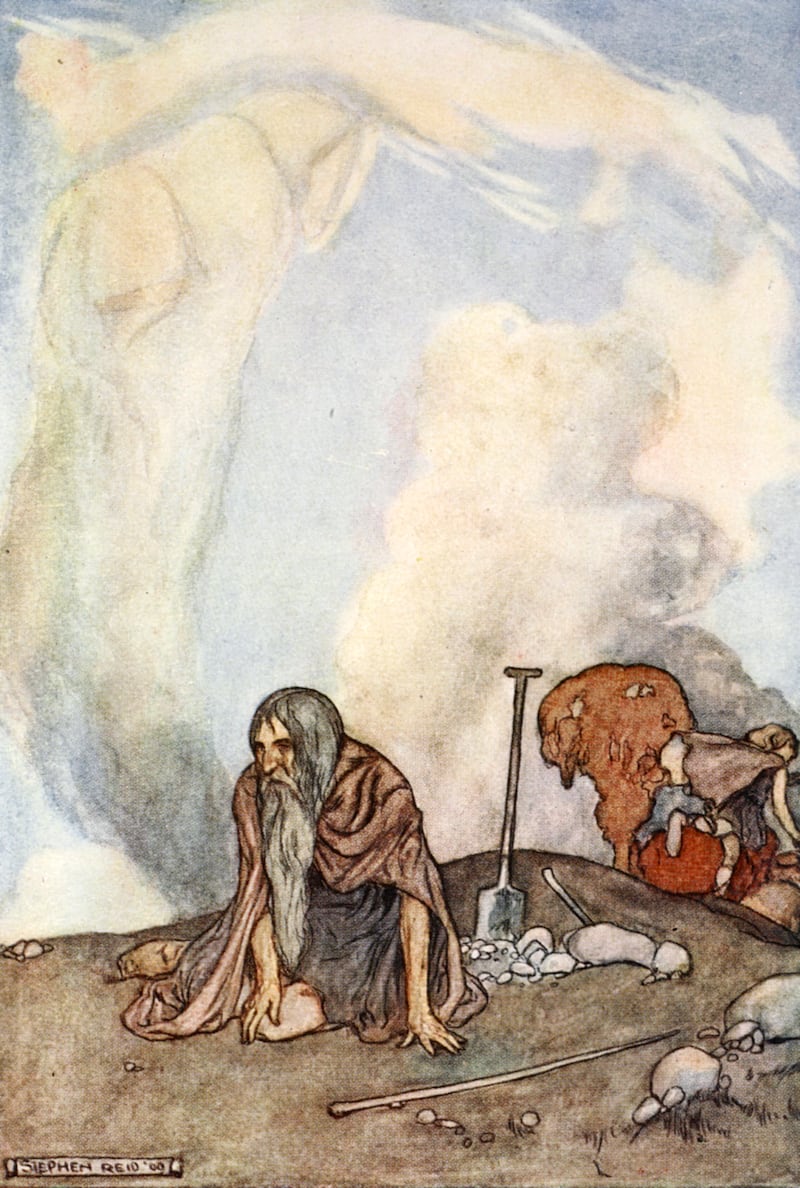
So begins Agallamh Oisín agus Phádraig (the Dialogue of Oisín and St Patrick) in Laoithe na Féinne, a compendium of the heroic poetry of an Fhiannaíocht (the Fenian cycle), one of the finest examples of Irish oral literature. Storytelling has been a part of Irish culture for thousands of years.
The Irish word “seanchas” refers to the body of traditional lore that was passed down from generation to generation. It features tales from Ireland’s ancient history, references to traditional law, and genealogical and topographical information. The stories and epic poems in the Fenian cycle tell the story of the Fianna, a roving band of heroes whose leader was Fionn Mac Cumhaill, the legendary Irish warrior.
St Patrick is often presented in conversation with members of na Fianna, and his presence is interpreted as an allegory for the coming of Christianity. In Agallamh Oisín agus Phádraig, St Patrick converses with an aged and weakened Oisín (son of Fionn) following his return, after 300 years, from Tír na nÓg, the land of everlasting youth. Enticed there by Niamh Chinn Óir, Oisín felt homesick for Ireland, but upon his return, as soon as he set foot on land, after what he thought was only three years, he became sick and aged rapidly. In this story he tells Pádraig of his sorrow after Fionn and his beloved comrades in the Fianna.
And who knows? Following the success of An Cailín Ciúin, Hollywood executives might just see the potential offered by Fionn Mac Cumhaill and his band of warriors in the Fianna for a series of action-packed blockbusters.
5
Cruachán Aigle or Cruach Phádraig?
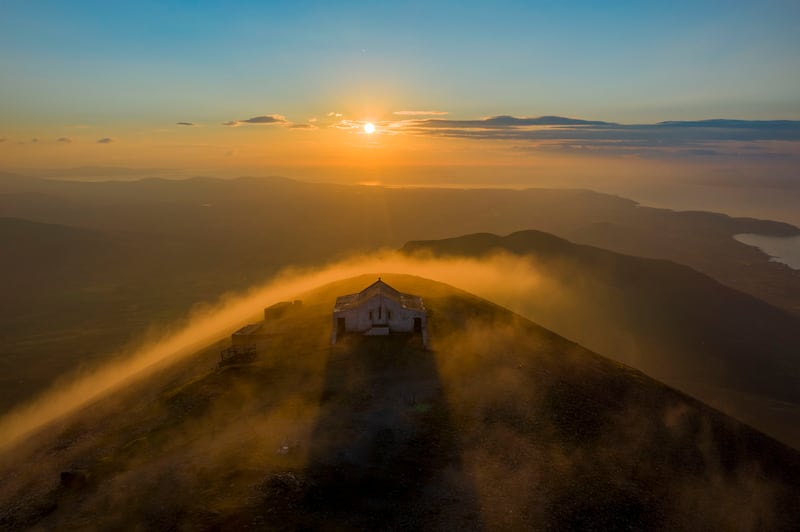
As well as featuring prominently in the Irish oral tradition, St Patrick left his mark on the country’s landscape. Dinnseanchas, or the lore of places, which tells a history of placenames, was an important means of preserving history, traditions and cultural values. Numerous locations around Ireland are named after St Patrick. Located in Co Mayo, in the west of Ireland, and dominating the countryside for many miles around, lies Ireland’s greatest monument to St Patrick, Cruach Phádraig, or Croagh Patrick.
The 764m (2,507ft) mountain was originally called Cruachán Aigle – and, like so many other sites of pilgrimage in Ireland, has a pagan history. Pilgrims climbed the mountain, known locally as the Reek, as long ago as the Neolithic era to worship the god of sun and light, Lugh. The mountain was eventually claimed by St Patrick, who spent 40 days and 40 nights fasting on its slopes.
6
Athbheochan na Gaeilge (the Gaelic revival)
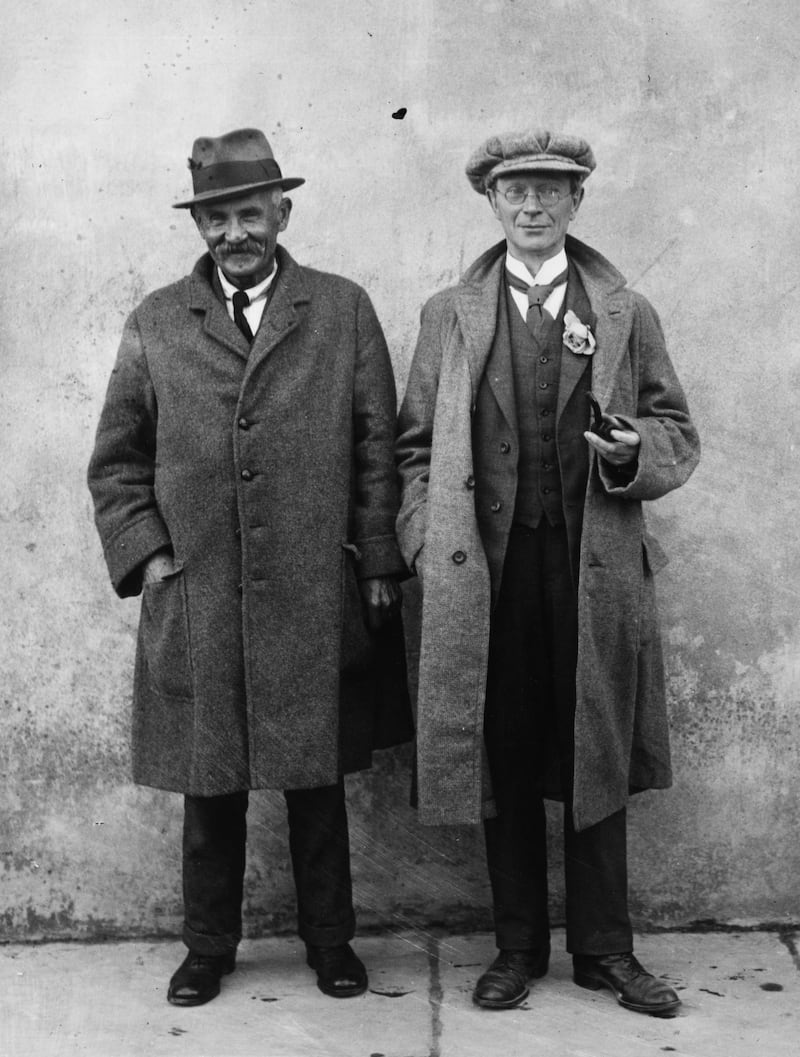
Ireland has a long and complex history of colonisation and cultural imperialism. Centuries of brutal repression – large-scale campaigns of exclusion, transplantation and murder – had at their heart the goal of suppressing the Irish-speaking majority and enforcing British supremacy. The establishment of a national education system in the 19th century was seen as a way to socialise the Irish populace and strengthen Ireland’s link with the British Empire. It actively disregarded Irish culture and any distinct elements of Irishness, most notably the Irish language. An Gorta Mór (the Great Hunger) affected the Irish-speaking population more than any other; by the time the 20th century came around, native-born speakers were generally limited to the western seaboard.
Despite its demographic marginalisation, Irish would go on to play a key part in the debate over the future of Ireland. It was in this context that the idea of Irish cultural autonomy came to be a central pillar of Ireland’s independence movement. Conradh na Gaeilge (the Gaelic League) was formed in 1893 as a nonsectarian cultural organisation with the goal of promoting the Irish language. It saw St Patrick’s Day as an ideal opportunity to celebrate Irish identity and to revive interest in the Irish language and in Irish culture. The organisation began organising St Patrick’s Day parades and campaigned for March 17th to be designated as a national holiday. In 1903 the organisation succeeded.
On March 18th, 1903, the day after the first St Patrick’s Day public holiday, The Irish Times commented: “The Gaelic League originated the idea of having the business houses and public offices closed, and, despite many difficulties, that body managed to achieve nearly as much as an Act of Parliament could have accomplished. Almost every shop in the city was closed, and certainly every important business establishment was. It is worthy to be chronicled that on a day when the festival was thus voluntarily kept in universal fashion, the House of Lords practically completed the passage of the Bill which is designed to make St Patrick’s Day a Bank Holiday. For the future, therefore, the National Festival will be a holiday in every sense of the term; and the first experience we have had of it as a general holiday is, we are happy to say, of the most satisfactory character.”
7
Lá Fhéile Pádraig (St Patrick’s Day)

St Patrick’s Day entered the calendar of the Catholic Church thanks in no small part to the work of the Waterford theologian and historian Luke Wadding. The Franciscan friar cofounded the Irish College in Rome in the 1620s and is said to have supported the Irish Catholic uprising of 1641. It was thanks to Wadding, who was a member of the commission for reform of the breviary, that March 17th, already observed by the Irish church, was decreed as a day of observation.
The first St Patrick’s Day parade was thought to have taken place in New York in 1762, held by Irish soldiers serving in the British army in the colonies. But evidence emerged in recent years that a St Patrick’s Day parade was held on March 17th, 1601, in a Spanish colony in Florida under the direction of an Irish priest, Ricardo Artur.
Celebrated by members of the growing Irish diaspora, St Patrick’s Day parades became increasingly popular in the United States in the 18th and 19th centuries, helped in no small part by the millions who fled Ireland during the Famine years.
In the early 20th century, economic and social hardship forced tens of thousands more to emigrate each year. St Patrick’s Day parades helped to create a sense of community and connection among the Irish diaspora and provided an opportunity for Irish communities to celebrate their heritage and culture. The New York parade, featuring 150,000-250,000 marchers each year, attracts an estimated two million spectators.
New York’s LGBTQ community has long campaigned for inclusion in the New York parade. In 2010, President Mary McAleese declined the parade committee’s invitation to serve as grand marshall, and New York mayor Bill de Blasio boycotted the parade for two years before the ban was finally lifted, in 2016. St Patrick’s Day parades have also helped to raise awareness of Irish culture and traditions in other parts of the world, and it is increasingly common for landmarks abroad to be lit in green to mark the day.

8
Seachtain na Gaeilge
Despite having its roots in the Irish-language movement (six of the seven signatories of the 1916 Proclamation were Irish speakers and members of Conradh na Gaeilge), the modern Irish State’s record on the Irish language could be described as reactive at best. Were it not for grassroots activism and community-level campaigning, we would not have today’s (admittedly limited) provision of Irish-medium schooling; neither Raidió na Gaeltachta nor Údarás na Gaeltachta would exist; and TG4 (not to mention the nascent Irish-language cinema scene, which now includes the Oscar-nominated An Cailín Ciúin) would be little more than a rocky field in Connemara.
The success of the modern St Patrick’s Festival is due in no small part to the organisers of another festival, Seachtain na Gaeilge, at the turn of the last century. Ireland’s two-week celebration of the Irish language, which takes place in the run-up to St Patrick’s Day, was first held in 1902. The modern iteration features thousands of events around the country and across the world. They range from ciorcail chomhrá (conversation circles) and scéalaíocht do dhaoine fásta (storytelling for adults) to music competitions, pop-up Gaeltachtaí and the Céilí Mór. Like its forerunner at the turn of the last century, Seachtain na Gaeilge relies on grassroots engagement: thousands of individuals participate each year, as do voluntary and community groups, schools, libraries, and music, sports and arts-and-culture groups and organisations.
The goal is to encourage more people to use Irish in their everyday lives. But it need not end on St Patrick’s Day. For many who speak Irish at home, at work or in social circles, these activities continue as part of a thriving year-round Irish-language scene. A first step for anyone who’d like to speak more Irish would be to head to a pop-up Gaeltacht, an informal gathering where speakers can meet, regardless of ability.
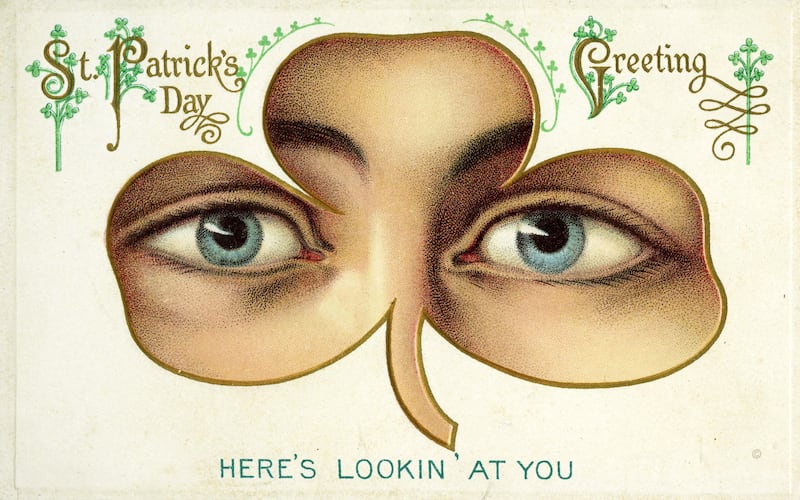
Gaeilge agus fáilte
Some Irish sayings that might come in useful this St Patrick’s Festival weekend:
- Go mbeirimíd beo ar an am seo arís – That we may live to see this time again next year
- An áit a mbíonn toit bíonn tine – There is no smoke without fire
- Is minic a bhris béal duine a shrón – It is often that a person’s mouth broke his nose
- An té a bhíonn siúlach bíonn sé scéalach – The person who likes to travel will have tales to tell
- Ní hé lá na báistí lá na bpáistí – A rainy day is not for children
- Is maith an scéalaí an aimsir – Time is a good storyteller
- Chomh sásta le cat an dá eireaball – As happy as a cat with two tails
- Is fánach an áit a bhfaighfeá gliomach – What an odd place to find a lobster (that is, It’s a small world)



















